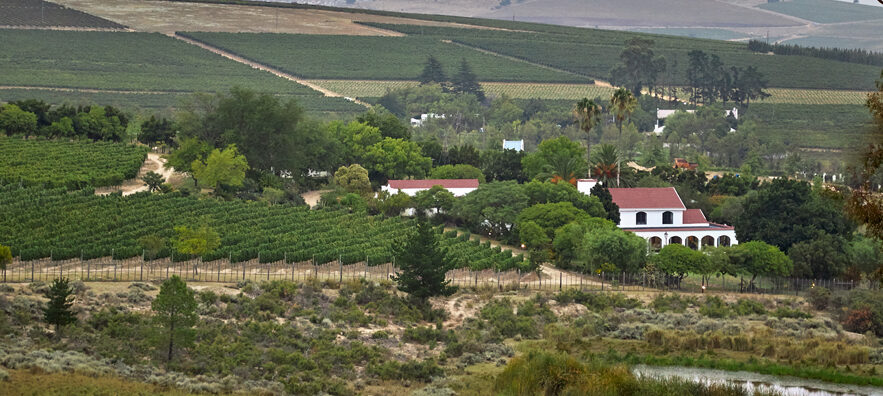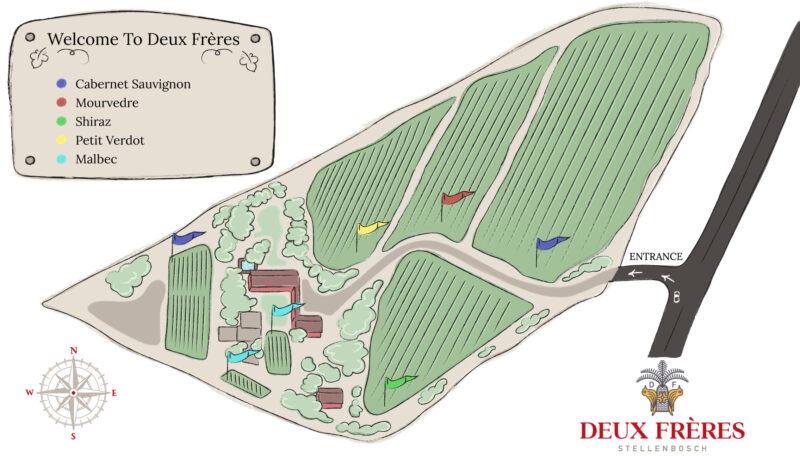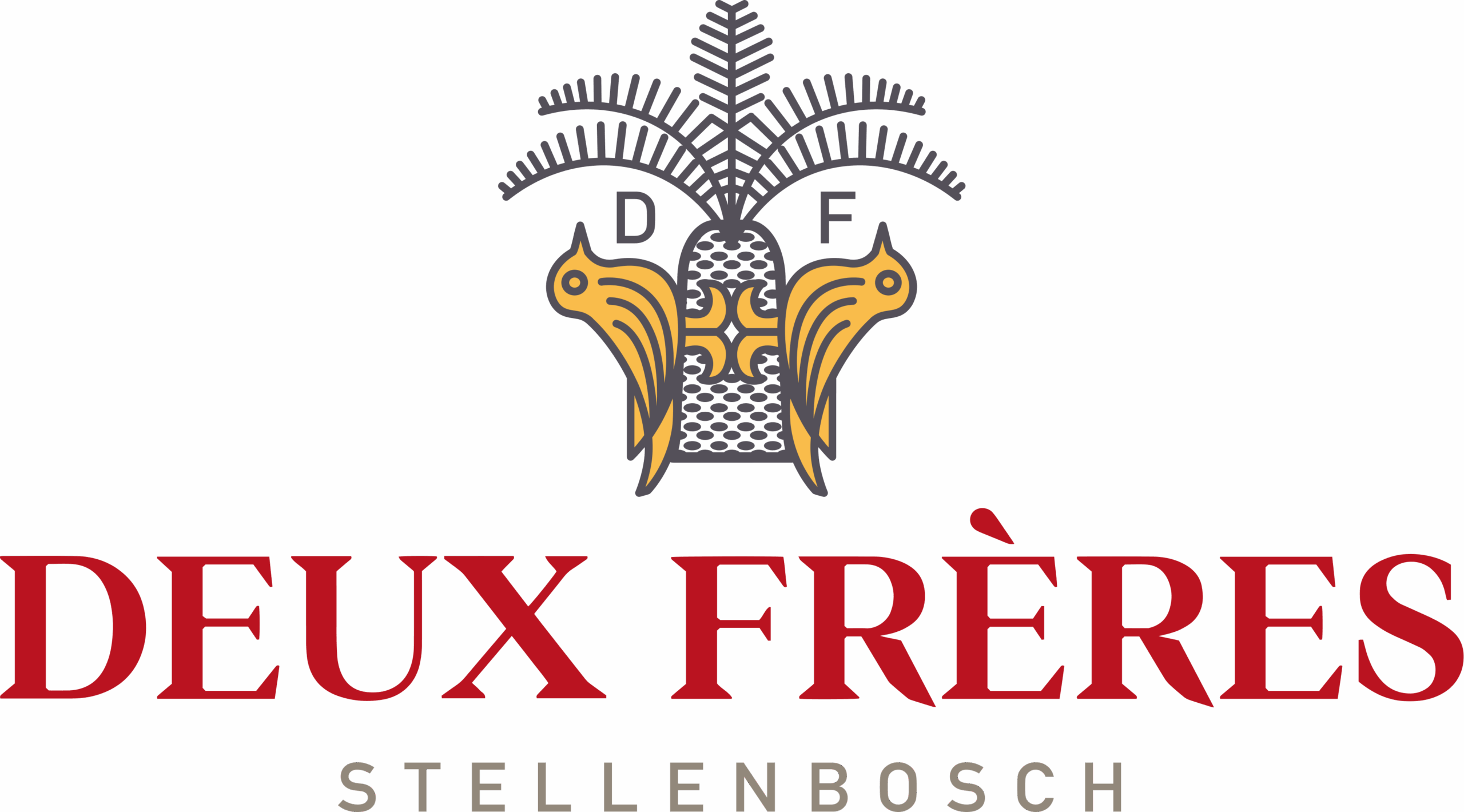
Terroir
July 30, 2020
Deux Freres is situated on the bank of a natural dry run/wetland on the westerly slope of the Simonsberg Mountain.
There is an old saying that the wines from the lower part of a slope, which has the heaviest soils and suffers most from a lack of drainage, are for the monks. Wines from the top part of the slope, which has the least rain but where the sun does not have a solar-panel like focus, are for the cardinals. But, the wine made from the middle “thermal belt” of a slope, which has perfect sun orientation and where rain runs off, is the wine of the pope.
Deux Freres has a westerly aspect. The canopies of the vines protect the bunch area from the sharp morning sun, but as the day progresses and the sun moves over to the western side, bunches are exposed to the more mellow afternoon sun.
The vines are planted in narrower rows than what is traditionally the norm for the area. This forces the roots to compete for nutrients and moisture deep in the soil with small roots even penetrating the granite bedrock.
The vines are planted in a north south direction allowing the South-Easter wind to move freely through the rows. This cools the grapes down, lengthening the ripening period to achieve optimal ripeness and also acts a giant blow drier, drying any moisture from occasional rain. The free movement of the wind also helps with the containment of fungi in the canopies of the vines.
Scientific soil analysis showed that Deux Freres is ideally suited to the production of red varietals and has four distinct soil types.

Cabernet Sauvignon was planted on the highest and the lowest parts of the farm totalling 1.1 ha. The top part is more gravel by nature with granite bedrock. The bottom 0.15 ha block of Cabernet has a clay base that offers great diversity. Three different clones of Cabernet Sauvignon were planted to enhance flavour profile and complexity. This is the backbone of our Liberte Bordeaux blend.
Below the area where the Cabernet is planted, is a mezzanine area. This is situated between the granite and a sandy clay base area, where broken granite and gravel is prevalent. Mourvedre (0.32 ha) and Shiraz (0.5 ha) were planted here as they are known to be quite vigorous in growth. These grapes are used to produce our Rhone blend, Fraternite.
Petit Verdot (0.36 ha) and Malbec (0.1 ha) were planted on the sandy clay-base soils. Together with the Cabernet they add body and a beautiful mid-palate to the Liberte.
